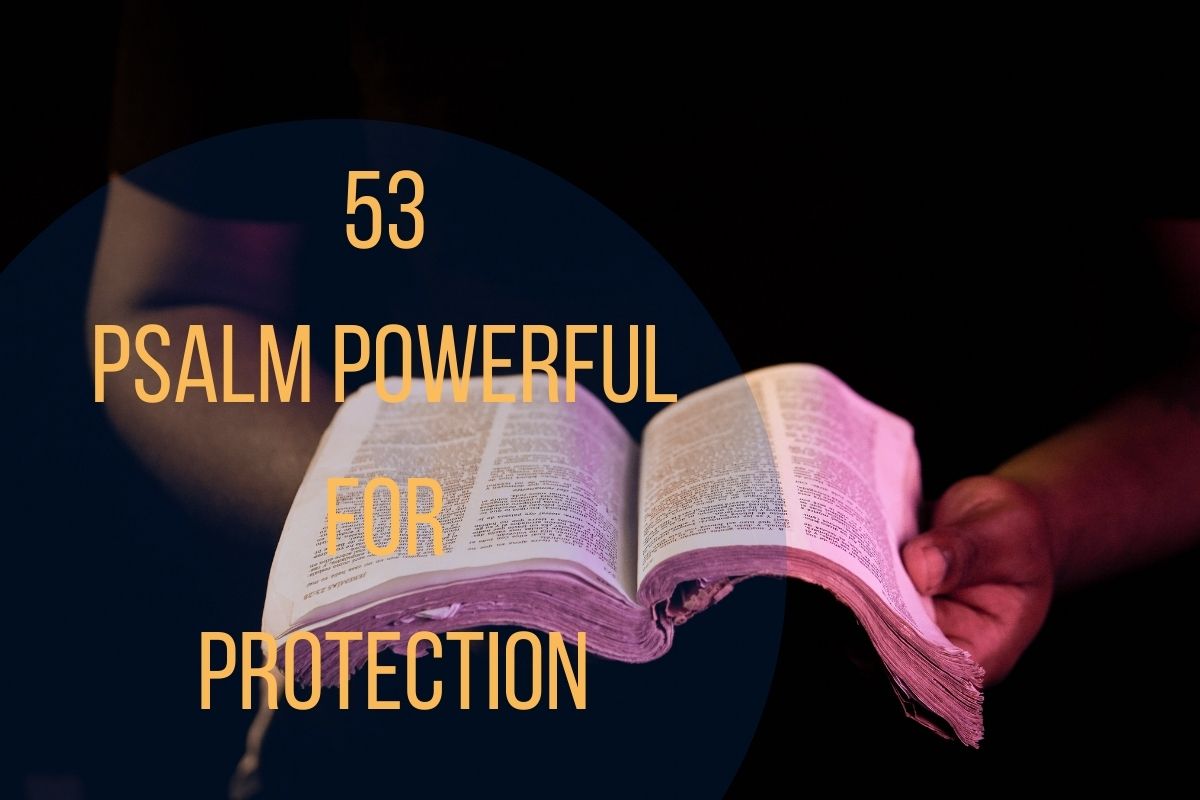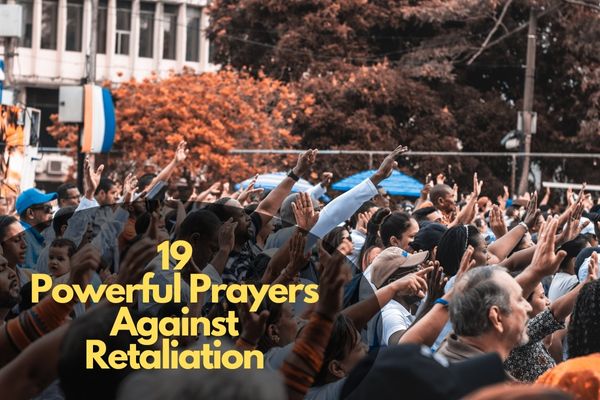Opening a prayer meeting is a sacred and significant moment for those seeking spiritual communion and guidance. It is an opportunity to set the tone for the gathering, invoke divine presence, and foster unity among participants. In this guide “How To Open Prayer Meeting”, we will explore the essential steps to open a prayer meeting effectively.
Ways to Open Prayer Meeting
Opening a prayer meeting is a meaningful and often spiritual event. Whether it’s a formal gathering at a place of worship or an informal meeting in a smaller group, here are some steps you can follow to open a prayer meeting
Set a Date and Time
Choose a date and time that is convenient for the participants and make sure it is well-communicated in advance. This allows everyone to prepare and plan to attend.
Select a Location
Decide where the prayer meeting will take place. It could be at a place of worship, in someone’s home, or even outdoors, depending on the preferences of the group.
Prepare an Agenda
It’s helpful to have an agenda or a list of what you plan to cover during the prayer meeting. This could include specific prayers, readings, songs, or discussion topics. Having an agenda can help keep the meeting organized.
Welcome and Greetings
Begin the meeting by welcoming all the participants. You can have someone open with a warm greeting and express gratitude for everyone’s presence.
Opening Prayer
Start with an opening prayer to set the tone and invite the presence of the divine. This prayer can be led by a designated person or offered collectively.
Scripture Reading
Consider reading a relevant passage from a religious text or a piece of spiritual wisdom that aligns with the theme or intention of the meeting.
Worship Songs
Singing worship songs or hymns can be a powerful way to bring the group together in a spirit of reverence and unity.
Share a Devotional Thought
Share a brief devotional thought or message related to the theme of the meeting. This can be a reflection or insight to inspire and guide the group.
Prayer Requests
Allow participants to share their prayer requests or concerns. This can be done verbally or through written requests. Make a list of these requests to pray for later.
Group Prayer
Pray collectively for the specific requests shared by participants. Designate someone to lead the prayer, and others can join in or say “Amen” in agreement.
Reflection and Discussion
Discuss the theme or topic of the meeting, allowing participants to share their thoughts, experiences, or insights. This can be a time for spiritual growth and mutual support.
Closing Prayer
Conclude the meeting with a closing prayer, expressing gratitude for the time together and seeking blessings for all.
Announcements (if applicable)
If there are any upcoming events or announcements, share them at the end of the meeting.
Fellowship
Encourage fellowship and social time after the meeting for participants to connect, share, and support one another.
Remember that the structure and format of a prayer meeting can vary widely based on the religious tradition and the preferences of the group. Be respectful and inclusive of all participants, and create an environment where people feel comfortable sharing and expressing their faith.
Choosing a Prayer Leader
Selecting a capable prayer leader is crucial. This individual should possess qualities like humility, faith, and the ability to articulate prayers effectively. A good prayer leader can inspire and guide the group in a meaningful spiritual journey.
Preparing the Heart and Mind
Preparation is key for both the prayer leader and the attendees. Before opening a prayer meeting, take time to center yourself, focus on the purpose of the gathering, and connect with God through personal devotion. This will help create an atmosphere of sincerity and receptivity.
Selecting a Suitable Location
Choosing the right location is essential. The meeting place should be free from distractions and conducive to prayer. A quiet and focused environment will help participants maintain their concentration and spiritual connection.
Gathering Participants
Extend open invitations to gather participants. Encourage inclusivity and make everyone feel welcome. The more diverse the group, the richer the collective spiritual experience.
Setting a Clear Purpose
Define the purpose of the prayer meeting. Are you gathering for thanksgiving, healing, guidance, or another specific reason? Having a clear purpose will focus the prayers and align the group’s intentions.
Crafting an Opening Prayer
Creating an effective opening prayer involves several elements. Begin with praise and adoration of God, followed by confession and repentance. Express gratitude for God’s blessings and conclude with supplication, bringing forth the group’s requests.
Incorporating Scripture
Incorporating scripture into the opening prayer can add depth and meaning. Select relevant Bible verses that align with the purpose of the meeting and integrate them into the prayer.
Engaging Participants
Engage participants in the opening prayer. Use responsive prayers, encourage active participation, and foster an environment of shared spirituality.
Maintaining Reverence and Unity
Throughout the prayer, it is essential to maintain a sense of reverence and unity. Participants should remember the collective purpose and focus on aligning their hearts with God.
Delivering the Opening Prayer
The prayer leader should deliver the opening prayer with clarity, sincerity, and faith. Their words should resonate with the participants and lead them into a profound spiritual experience.
Common Opening Prayer Mistakes to Avoid
Avoid common mistakes, such as rushing through the prayer, using overly complex language, or failing to engage the participants. Maintain a humble and sincere approach.
Prayers are a deeply personal and meaningful form of communication with a higher power for many people. While there are no hard and fast rules for prayer, there are some common mistakes to avoid to ensure that your prayers are respectful and effective:
Lack of Sincerity: One of the most important aspects of prayer is sincerity. It’s essential to approach prayer with a genuine heart and a true desire to communicate with the divine. Avoid going through the motions without heartfelt intent.
Rushing: Taking your time with a prayer is crucial. Rushing through it can make it feel insincere and disrespectful. Slow down, focus, and give your full attention to the act of prayer.
Repetition without Meaning: Repeating prayers can be a meaningful tradition, but it’s essential to understand the words you are saying. Mindless repetition can lose its purpose and meaning.
Inappropriate Language: Using disrespectful or inappropriate language in a prayer can be offensive. It’s important to choose your words carefully and respectfully when addressing a higher power.
Selfishness: While it’s okay to pray for your own needs and desires, avoid being overly self-centered in your prayers. Include prayers for others, express gratitude, and seek guidance or wisdom.
Lack of Gratitude: Expressing gratitude is an essential aspect of prayer. Always take the time to thank the divine for the blessings and guidance you’ve received.
Specificity: Be specific in your prayers when necessary, but also allow room for divine wisdom. Avoid demanding precise outcomes or being too prescriptive in your requests.
Lack of Forgiveness: Holding onto grudges and refusing to forgive can hinder the effectiveness of your prayers. It’s important to approach prayer with a forgiving and compassionate heart.
Impatience: Understand that prayers may not always be answered immediately or in the way you expect. Avoid impatience, and trust that the divine will respond in its time and manner.
Lack of Faith: Doubt and lack of faith can undermine the effectiveness of your prayers. Try to approach prayer with a mindset of trust and belief in the power of your communication with the divine.
Neglecting Silence: Prayer doesn’t have to be all about talking. Silence and contemplation can be just as important for listening to the divine or finding inner peace and guidance.
Being Inconsistent: Consistency in your prayer practice is key to forming a strong connection with the divine. Avoid being sporadic in your prayers and make it a regular part of your life.
Ignoring Intent: Your intent and motivation behind your prayers matter. Don’t just pray for the sake of it; make sure your prayers are rooted in your true intentions and beliefs.
Remember that prayer is a deeply personal and individual practice, and what works for one person may not work for another. The most important thing is to approach prayer with sincerity, respect, and a genuine connection to your beliefs and values.
Bible Verses on Prayer
To inspire and connect with the significance of opening prayers, consider these Bible verses:
1. James 5:16
“The prayer of a righteous person is powerful and effective.”
2. Philippians 4:6
“Do not be anxious about anything, but in every situation, by prayer and petition, with thanksgiving, present your requests to God.”
Conclusion
Opening a prayer meeting is a sacred and intentional act. It serves as the foundation for a spiritually enriching gathering. By choosing a prayer leader, preparing your heart and mind, selecting the right location, and crafting a purposeful opening prayer, you can create a profound and transformative experience. Remember that engaging participants, maintaining reverence, and avoiding common prayer mistakes are essential for a successful prayer meeting. Approach this task with humility and sincerity, and let the divine presence guide your journey.
FAQs About Opening Prayer Meetings
1. Can anyone lead the opening prayer in a meeting?
Yes, anyone can lead the opening prayer, but it’s advisable to choose someone who possesses the qualities of a good prayer leader.
2. How long should the opening prayer be in a meeting?
The length of the opening prayer can vary, but it’s essential to maintain a balance between brevity and depth. Typically, a few minutes are sufficient.
3. What is the purpose of using Bible verses in the opening prayer?
Bible verses add depth and meaning to the prayer, connecting it with the divine word and emphasizing the spiritual purpose of the meeting.







